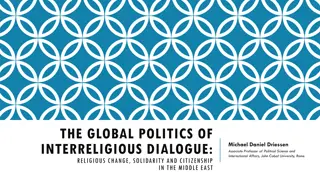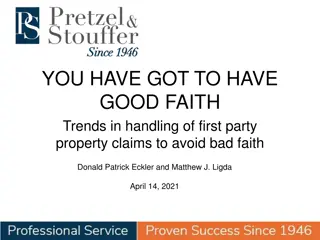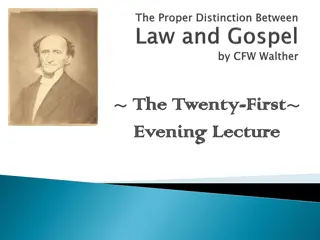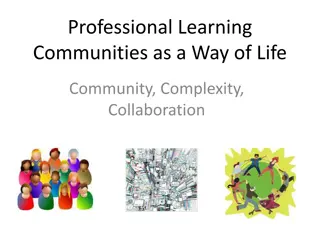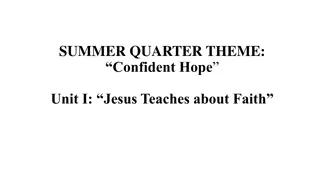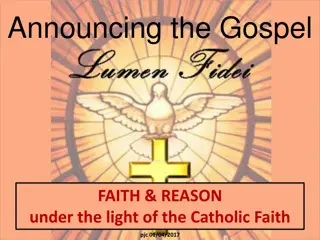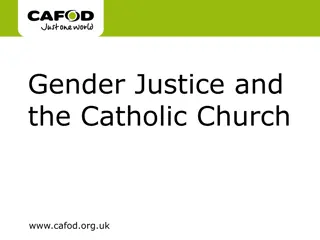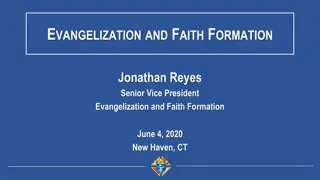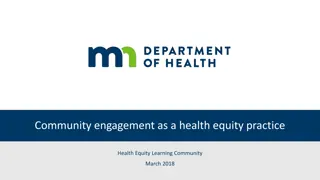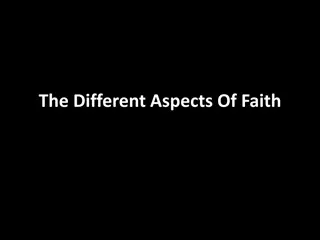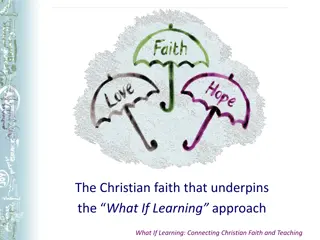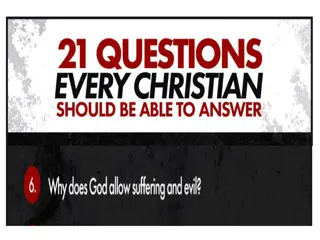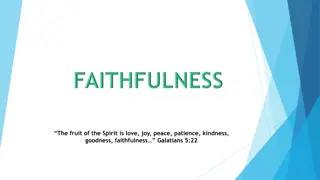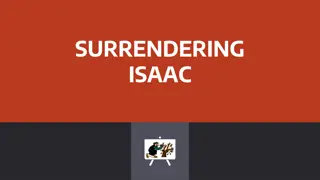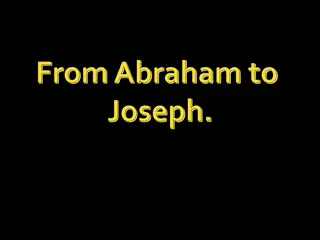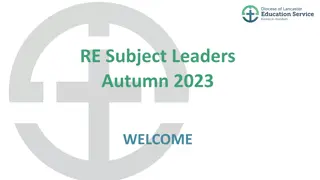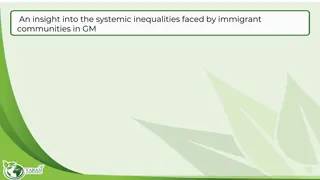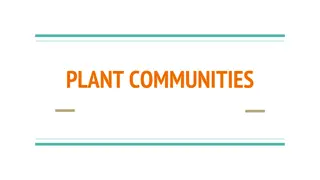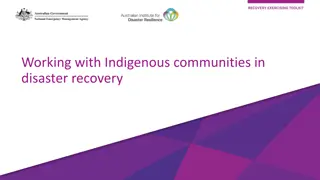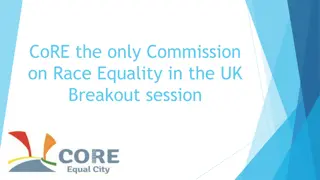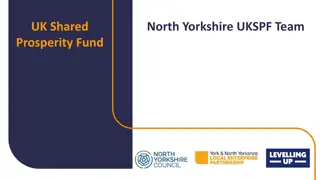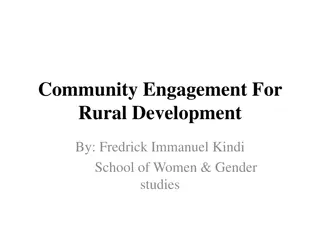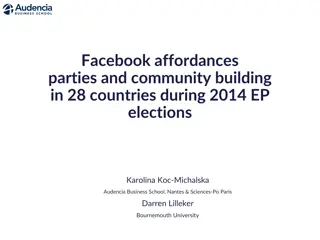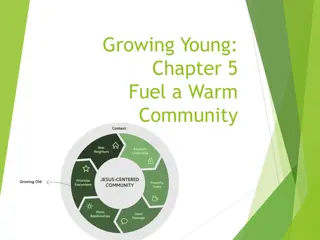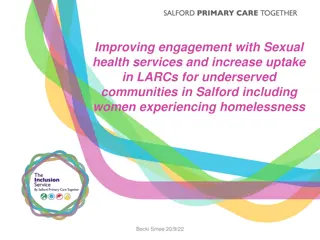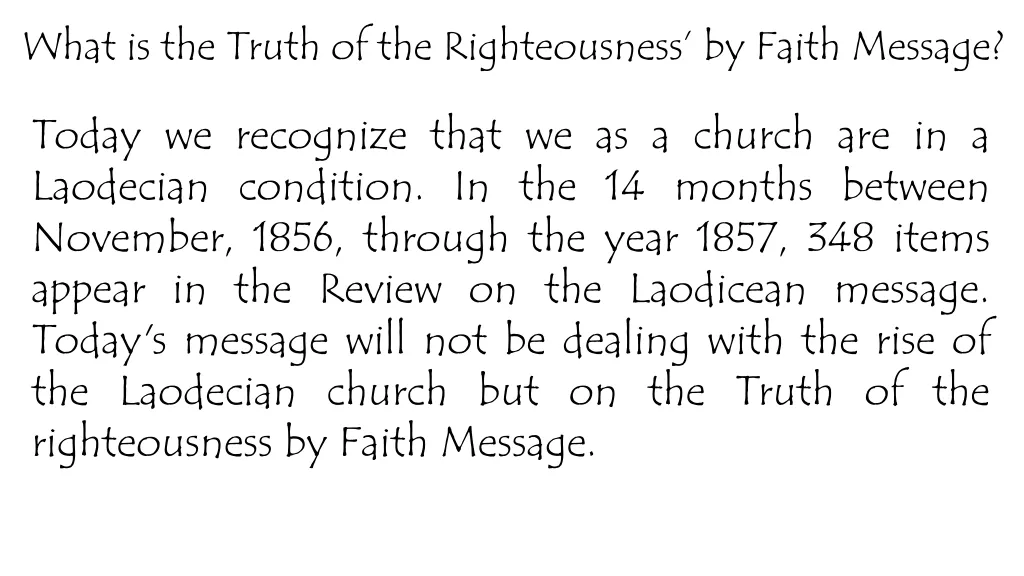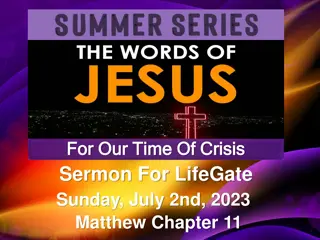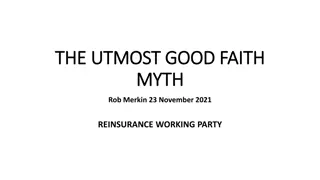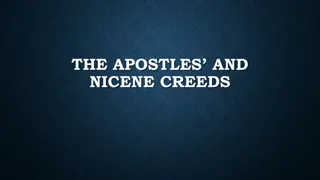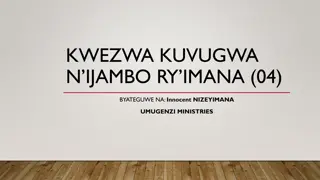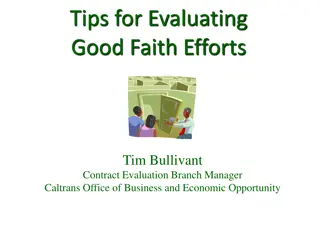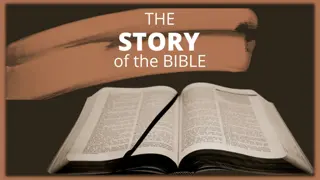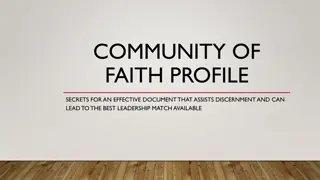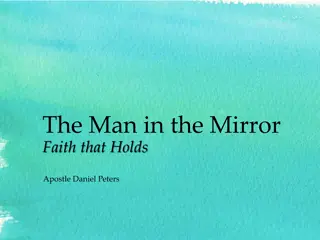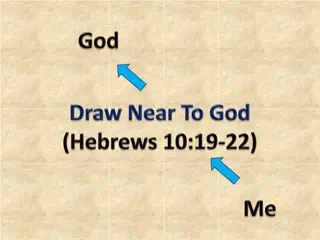Interreligious Engagement in Faith Communities
Exploring the dynamics of interreligious engagement within faith communities, Rabbi Dr. Rachel S. Mikva emphasizes the importance of building bridges and fostering connections across different faith traditions. This dialogue and interaction take place in various settings, promoting understanding and collaboration among diverse religious groups.
Download Presentation

Please find below an Image/Link to download the presentation.
The content on the website is provided AS IS for your information and personal use only. It may not be sold, licensed, or shared on other websites without obtaining consent from the author. Download presentation by click this link. If you encounter any issues during the download, it is possible that the publisher has removed the file from their server.
E N D
Presentation Transcript
Building Bridges Across Faith Communities CTS Pastors Experience Rabbi Dr. Rachel S. Mikva Herman Schaalman Chair in Jewish Studies InterReligious Institute, Senior Faculty Fellow
Where does interreligious engagement happen?
Where does interreligious engagement happen? At places of work Through the media Via internet Within families On campuses Within congregations Between congregations, community organizations, etc. AND ?
Starting with you What has been your experience with interreligious engagement?
What is the value of Interreligious Engagement?
What is the value of Interreligious Engagement? Fight bigotry and create understanding across religious difference. Gather partners in the work of social transformation. Establish relationships that can defuse religious tensions and protect besieged communities. Increase religious literacy, including an appreciation for how others see/hear us. Psalm 133:1 Psalm 133:1- -Behold, how good and how pleasant it is good and how pleasant it is for us to dwell together in for us to dwell together in unity! unity! Behold, how Deepen our self-understanding and spiritual commitments. AND ?
What are the barriers to building bridges?
What are the barriers to building bridges? Fear Ignorance Competing priorities Lack of religious diversity in your community Lack of support in your own community Not having tools or ideas AND ?
Social Justice Service Learning Cooperative congregational projects: advocacy and service Congregation-based community organizing -Soup kitchens, food pantries, community gardens -Gathering voices to speak up for local concern -Emergency shelter -Food/clothing/toy drives -Make-a-difference day -March, protest, prayer vigil -Get out the vote -Letter-writing campaign -Actions of solidarity
Social Justice Service Learning Interfaith social justice organizations Individual faith-based organizations in partnership Organizing Against Police Violence Faith-based ReEntry Projects: Inner-City Muslim Action Network, Healing Communities, ReEntry Family and Faith Circles of Support IMAN Green ReEntry Interfaith Worker Justice, Clergy and Laity United for Economic Justice
Social Justice Service Learning Crisis intervention Non-institutional partnerships Cooperative buying
Social Justice Service Learning Issue-oriented interreligious learning & study tours Blogging, cyber-activism and networking Church-Synagogue Joint Youth Group Civil Rights tour New Evangelical Partnership Networking on Criminal Justice Reform, Creation Care, and Interfaith Dialogue What Religion Really Says About Anti- LGBTQ Discrimination By Homayra Ziad, Rachel S. Mikva, and Phyllis Pennese
Prayer and Ritual Interfaith worship (e.g. Thanksgiving, prayer vigils, in response to community crisis) particular expressions or common ground Pulpit exchanges Visiting for worship or ritual observance (seder, iftar) Creative ritual (Read-the-Quran Day, reimagined rituals for interfaith families) Retreats (women, themed) AND ? What Unites Us Is Greater
Engagement through the Arts Exposure with opportunity for discussion: Film showings/festivals Theatrical performance Collective Arts and Music Festivals Caf Finjan, Takin' It to the Streets , Sounds of Faith Collaborative Arts and Music Projects Same Difference, Shalom2Salaam, Poetry Pals Comedy Funatical, The Israel-Palestine Comedy Tour AND ?
Education and Dialogue Lectures, Panels, Workshops and Symposia Book groups Mini-courses Text study (Scriptural Reasoning) Women s or other affinity groups Dialogue/study groups Storytelling (personal and traditional) List serve, Facebook, other social network AND ? Storytelling in the religious traditions of Abraham, Sarah and Hajar Sometimes the way the story goes depends on who tells it. -Janice DelNegro
Education and Dialogue Contrary to much binary thinking that says only one way is right: Within your community and between communities With clergy representing (or other professionals), and participants speaking together What you can teach, and what adherents should teach One-shot deals and deep learning Exposure/encounter, and building long-term relationships
Some things you could teach within your community Christian theologies of pluralism, e.g. Divinity and Diversity, Marjorie Hewitt Suchocki Making a Way Out of No Way: A Womanist Theology, Monica Coleman Monopoly on Salvation? A Feminist Approach to Religious Pluralism, Jeannine Hill-Fletcher And socially-based religious pluralism, e.g. Harvard Pluralism Project Sacred Ground, Eboo Patel
Within your community, part 2 Jesus as a Jew The Misunderstood Jew, A.J. Levine Jesus of Nazareth, King of the Jews: A Jewish Life and the Emergence of Christianity, Paula Fredricksen The Jewish Gospels, Daniel Boyarin Dismantling anti-Muslim bias Islam and the Blackamerican, Sherman Jackson Muslims in America, Edward E. Curtis IV Fear, Inc. 2.0 Report Southern Poverty Law Center Anti-Hate Project
Within your community, part 3 Introduction to Islam -No God But God: The Origins, Evolution and Future of Islam, Reza Aslan -The Story of the Qur an: Its History and Place in Muslim Life, Ingrid Mattson -In the Footsteps of the Prophet: Lessons from the Life of Muhammad, Tariq Ramadan -The Bible and the Qur an: Biblical Figures in the Islamic Tradition, Younus Mirza and John Kaltner
Tools/rules for engagement
Cultivate common ground AND Dignify difference There is a tendency to seek out the many examples of beautiful harmony among religious teachings that exist. There is a tendency to seek out lowest common denominator when praying or learning together. There is a tendency to avoid difficult issues. People come will all manner of identities: race, gender, sexuality, class . Seek out ways to recognize and celebrate particularity and difference as well. Once there is relationship and trust, tackle the tough stuff too
Learning Disinterest is not a sign of respect. Learn enough to engage with sensitivity, and to have intelligent questions. Admit what you don t know, and make room for yourself and others to grow.
Relationships matter Personal narratives are very important in building relationships and effective in fashioning understanding even if/when the religious information is imperfect. Be proactive. Build relationships now, so they are there when it matters. Make time to nurture them. We still can/should react when crisis or conflict unfolds, but then build on that momentum. Read the Qur an Day, Gainesville FL Billings MT 1993 Christmas Menorahs Ramadan fundraiser to rebuild black churches
Danger of the single story No individual can represent the entire religious tradition. Intra-faith engagement is also essential. People should be encouraged to speak in I statements. This does not mean that no one can teach about, but religious traditions are diverse and multivocal. -Isms, at best, describe a portion of the community, and sometimes do not reflect actual belief and praxis. Media frequently feeds us a single story of minority traditions in the U.S. Chimamanda Ngozi Adichie
Engagement among equals YOU NEED PARTNERS! That means people and organizations who are in on the planning, and with whom you commit to ongoing relationship. POWER can be out of balance due to many factors: size of community, financial situation of organization, knowledge, experience, etc. as well as the basic context of Christian privilege. CONTEXT will shape power dynamics of the moment (host, issue, need to learn about minority tradition).
Be accountable to one another Only the members of a particular faith tradition can know what it is to be a member of that community. Be cautious (and consult) when drawing parallels to other traditions; avoid misrepresentation and stripping of uniqueness. What you say about your own tradition implicates others. Practice holy envy, a profound appreciation of other religious traditions and their unique beauty without appropriation. Enagement often deepens our own religious commitments, but the point of meeting can never be all about me. We can t erase the significance of the individuals and traditions we encounter.
Think more broadly about religion and include the non-religious Programs can select dialogic or trialogic focus; they do not always need to be all-inclusive. When you are being inclusive, remember that not all traditions are monotheistic, or even theistic and not everyone fits into a tidy box. Common language may require more consultation, consideration and learning. (Often times, enabling multiple particular expressions works better.) Include the non-religious in your outreach and brainstorming and NOT with the agenda to draw them into the church. Chris Steadman, author of Faitheist
Honesty (duh) Honesty builds trust. Resist the tendency to view your own tradition in its ideal form, and them compare that to what you see of the actual practice of another tradition. Not all people have the same social or theological capacity for self-critique. Acknowledge mistakes and injuries. Let reproof take the form of struggle (call in vs. call out). Let struggle be received with empathy.
Better Together Day Project Spirit (start 4:13)


